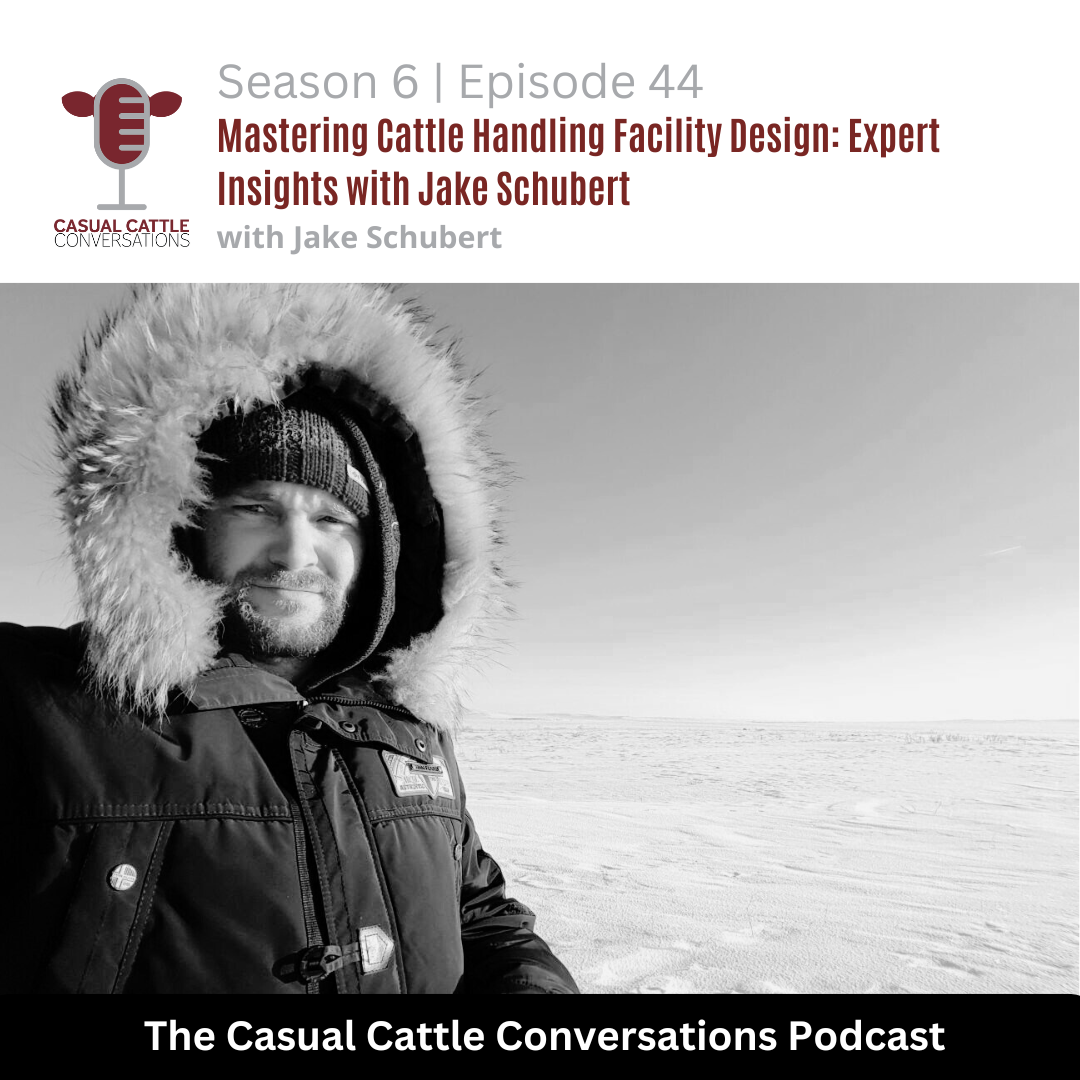Mastering Cattle Handling Facility Design

Question of the Week: What’s your next investment?
This week’s podcast episode discusses the importance of investing in good working facilities and designing them correctly the first time. I know I have a running list of projects and products I’d like to invest in for our operation, but I don’t always have them prioritized.
Have you prioritized your list for the coming year, so you know which investment to focus your energy on?
Mastering Cattle Handling Facility Design: Expert Insights from Jake Schubert
Jake Schubert’s passion for helping others design and build cattle facilities started at a young age. His father was a ranch hand in the Sandhills of Nebraska before deciding to start his own business that allowed him to build corrals not only across the Sandhills, but all over the United States. Growing up around this environment, Schubert found his own passion for helping ranchers design cattle handling facilities that are safe and effective for livestock and people.
“For me, it is more about helping people. When I was building facilities, I noticed people had a tough time visualizing the project and what it would be like before they spent thousands of dollars on it,” said Schubert.
Schubert currently resides in St. Petersburg, Russia with his family and helps cattle producers around the world design new facilities and modify old ones. He shares the dos and don’ts of designing cattle handling facilities during this episode of Casual Cattle Conversations.
Schubert began his career by working with his father but decided to take things to the next level after noticing some common problems from project to project.
“About 15 years ago I started using 3D modeling systems to work with my clients. It was always a problem to nail down designs with clients before this because most ranchers aren’t designers and will only build one to two sets of corrals in their lifetime,” said Schubert.
This 3D modeling system is what allowed Schubert to continue his passion and start Aurochs Consulting after marrying his wife and moving overseas. Currently, he consults with cattle producers to design calving barns, corrals and beef cattle infrastructure.
One of the first considerations that goes into designing a new facility is thinking about the future. You must think about more than what you need right now for facilities.
“For the young person that has bought an old homestead and is redesigning the facilities, we need to know how many cows they want in 5 or 10 years. Do you want 50 or 500? That doesn’t mean you have to build it all right now, but knowing this will allow you to build something that you can easily expand when the time is right,” said Schubert.
One example would be if your dream facility has a building over the top of the chute and alley. If you can’t afford that right now, Schubert recommends building the rest of the corrals around where the future building will be to reduce the amount of restructuring that will happen once you can afford to put the building up. And when you do put that building up, make sure it is tall enough to park equipment in if you want to use the wasted space for storage throughout the year.
Sorting methods are another factor to consider when building a corral. Cattle producers need to think through when they are processing cattle throughout the year and how many ways they will need to sort.
“Most modern facilities have a way to sort as cows leave the chute. You still have to split cows and calves before they go through, but it is easier to sort cows into the right group when they are caught and all you have to do is swing the right gate,” said Schubert. Cattle producers also need to consider if sorting will be done on foot or with horses to ensure pens are built to the appropriate sizes and gates are easy to use.
Don’t forget about the loading dock! Think about how you haul cattle out now and how you might do it in the future.
“The loading dock is usually an afterthought, and it should really be one of the first things you place when you are creating the design. You want to make sure trailers and semis have enough room to easily back up and turn around. When these old corrals were built, the people probably couldn’t imagine how big our trailers would be today.” said Schubert.
As Schubert thinks about how cattle facilities have changed from when he was helping his father as ten-year-old kid up to now, the main difference is how much people are willing to spend.
“People are willing to spend more on facilities today compared to years ago. Help is getting harder and harder to find, so being able to work cattle with only two or three people is important,” said Schubert. Schubert has seen many different facilities across the world and offers a valuable perspective to his clients.
When it all comes down to it, remember that good corrals are an investment. They keep both people and cattle safe. They might even reduce some tension and make the language a little more pleasant on cattle processing days. Keep your future goals in mind as you design your corrals and take your time planning the layout from the loading dock to the chute to how water is going to run out.







